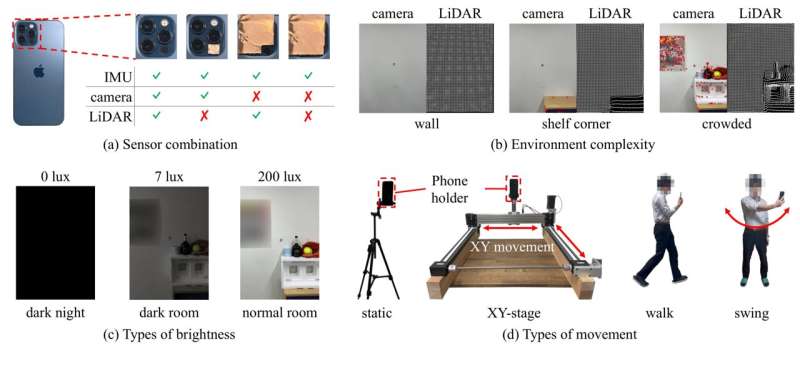
November 23, 2024 by Osaka University
Collected at: https://techxplore.com/news/2024-11-real-world-main-barriers-smartphone.html
Smartphone-based augmented reality, in which visual elements are overlaid on the image of a smartphone camera, are extremely popular apps. These apps allow users to see how furniture would look in their house, or navigate maps better, or to play interactive games. The global phenomenon Pokémon GO, which encourages players to catch digital creatures through their phone, is a well-known example.
However, if you want to use augmented reality apps inside a building, prepare to lower your expectations. The technologies available now to implement augmented reality struggle when they can’t access a clear GPS signal.
But after a series of extensive and careful experiments with smartphones and users, researchers from Osaka University have determined the reasons for these problems in detail and identified a potential solution. The work was presented at the 30th Annual International Conference on Mobile Computing and Networking.
“To augment reality, the smartphone needs to know two things,” says Shunpei Yamaguchi, the lead author of the study. “Namely, where it is, which is called localization, and how it is moving, which is called tracking.”
To do this, the smartphone uses two main systems: visual sensors (the camera and LiDAR) to find landmarks such as QR codes or AprilTags in the environment, and its inertial measurement unit (IMU), a small sensor inside the phone that measures movement.
To understand exactly how these systems perform, the research team set up case studies such as a virtual classroom in an empty lecture hall and asked participants to arrange virtual desks and chairs in an optimal way.

Overall, 113 hours of experiments and case studies across 316 patterns in a real-world environment were performed. The aim was to isolate and examine the failure modes of AR by disabling some sensors and changing the environment and lighting.
“We found that the virtual elements tend to ‘drift’ in the scene, which can lead to motion sickness and reduce the sense of reality,” explains Shunsuke Saruwatari, the senior author of the study.
The findings highlight that visual landmarks can be difficult to find from far away, at extreme angles, or in dark rooms; that LiDAR doesn’t always work well; and that the IMU has errors at high and low speeds that add up over time.
To address these issues, the team recommends radio-frequency–based localization, such as ultra-wideband (UWB)-based sensing, as a potential solution.

UWB works similarly to WiFi or Bluetooth, and its most well-known applications are the Apple AirTag and Galaxy SmartTag+. Radio-frequency localization is less affected by lighting, distance, or line of sight, avoiding the difficulties with vision-based QR codes or AprilTag landmarks.
In the future, the researchers believe that UWB or alternative sensing modalities like ultra-sound, WiFi, BLE, or RFID have the potential for integration with vision-based techniques, leading to vastly improved augmented reality applications.
More information: Experience: Practical Challenges for Indoor AR Applications, DOI: 10.1145/3636534.3690676

Leave a Reply